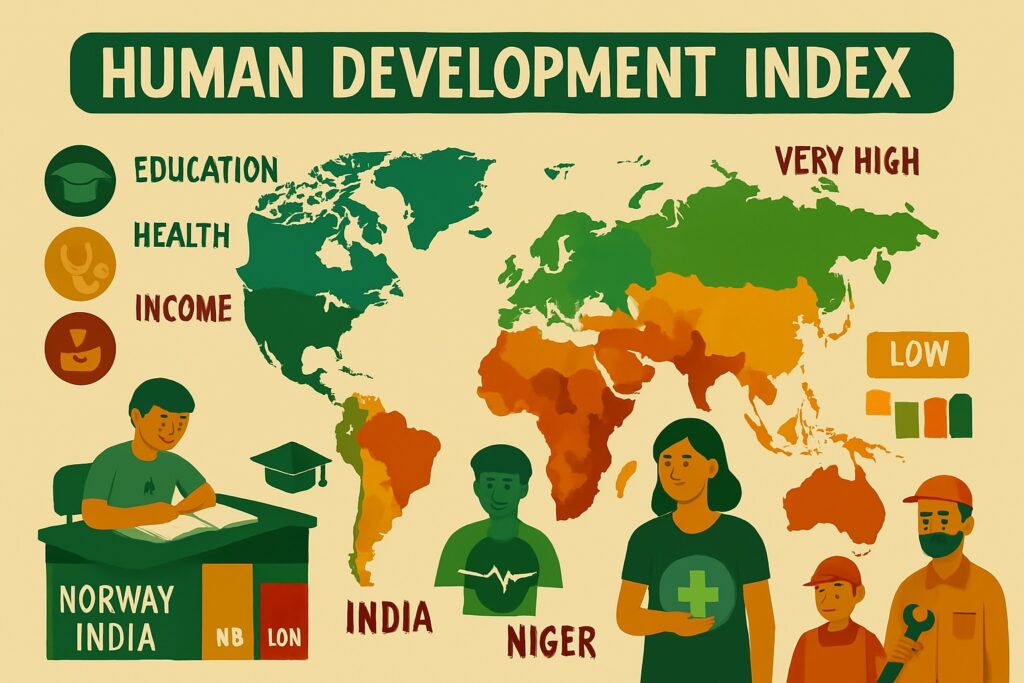The Human Development Index (HDI) is a measure of a country’s level of human development, which takes into account a range of factors such as life expectancy, education, and income. The HDI was developed by the United Nations Development Programme (UNDP) as a way of measuring progress in improving the well-being of people around the world.

The HDI is calculated using three key indicators: life expectancy at birth, mean years of education, and gross national income per capita. The index ranges from 0 to 1, with a higher score indicating a higher level of human development.
Life expectancy at birth is an important indicator of a population’s health status, and is influenced by factors such as access to healthcare, sanitation, and nutrition. Mean years of education measures the average number of years of education received by a person aged 25 years or older. This indicator reflects a population’s access to education and the quality of education provided. Gross national income per capita measures a country’s economic development and reflects the average income of its citizens.
The HDI is widely used as a measure of human development and is often used to compare progress between countries over time. Countries with high HDI scores tend to have longer life expectancies, higher levels of education, and higher incomes. In 2020, Norway ranked first on the HDI, followed by Ireland, Switzerland, Hong Kong, and Iceland.
The HDI has been criticized for its narrow focus on a limited set of indicators and for not taking into account important factors such as gender equality, political freedom, and environmental sustainability. However, the UNDP has developed other indices, such as the Gender Development Index and the Multidimensional Poverty Index, which attempt to address some of these limitations.
Overall, the HDI is a valuable tool for measuring progress in improving human well-being and provides important insights into the factors that contribute to a country’s level of development.
Read: Geography Notes